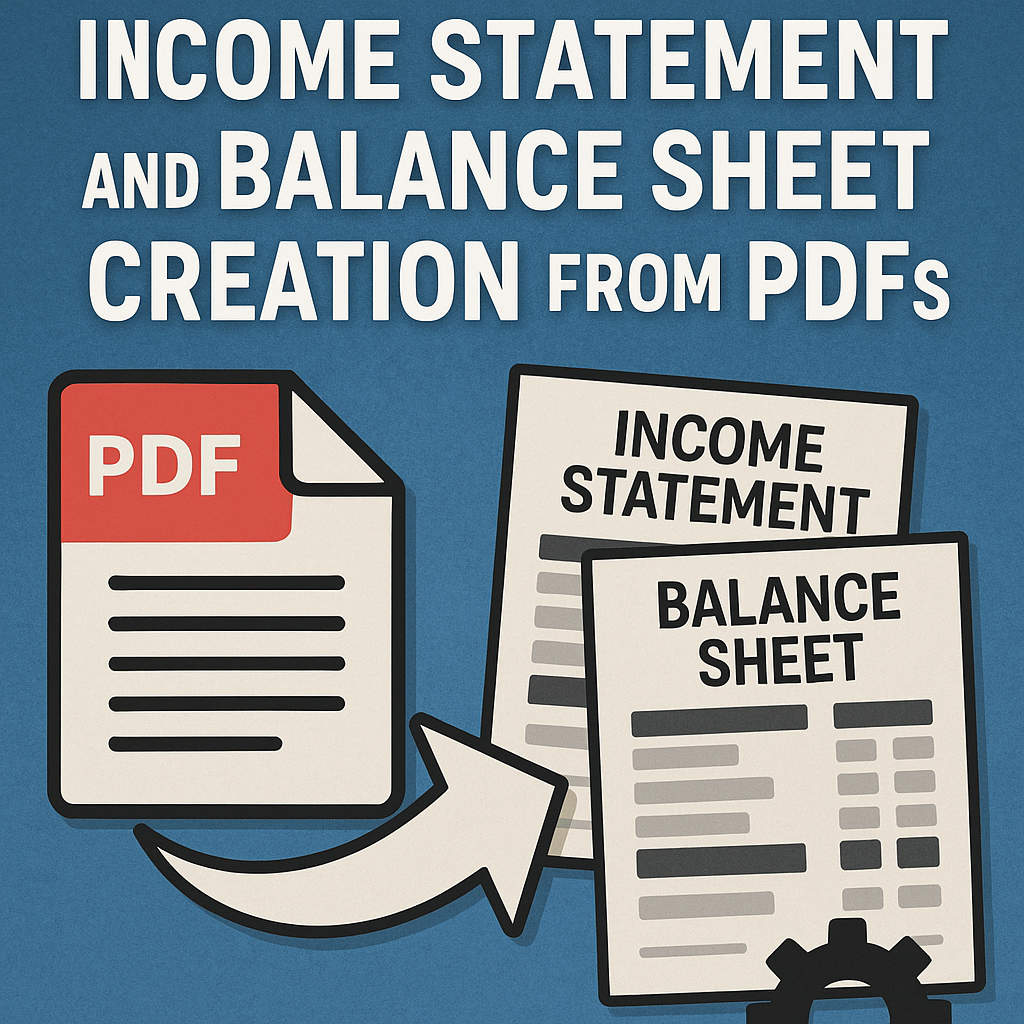How I Automated Income Statement and Balance Sheet Creation from PDFs (and How You Can Too)
Igor Strelkov
Published on July 3, 2025

Manually extracting financial data from PDFs used to be one of the most painful parts of my workflow. Whether I was building financial models, reviewing a company for due diligence, or just trying to make sense of scanned balance sheets, the process was slow, frustrating, and filled with copy-paste errors.
I finally got tired of wasting hours and decided to automate it.
Here’s how I now turn PDFs—even scanned ones—into clean, structured income statements and balance sheets in minutes. If you're dealing with financial documents regularly, this guide might save you a lot of time too.
Step 1: Understanding the PDF Problem
PDFs are notoriously hard to work with. Some are:
- Native PDFs (text-based, machine-readable)
- Scanned PDFs (image-based, requiring OCR)
Even within the same document, formatting can shift across pages. For multi-year reports, that means merged columns, inconsistent labels, and broken tables. I realized early that no single manual approach would scale.
Step 2: Using the Right Tool (No-Code Solution)
After testing out a few tools and APIs, I built and now use Assess Finance, an AI-powered platform I created specifically for this purpose.
It handles both native and scanned PDFs and does the following:
- Parses and detects financial tables
- Extracts line items across income statements and balance sheets
- Maps them into a consistent structure
- Outputs Excel or CSV files ready for analysis
The biggest win? I can upload a statement and get back standardized financials in seconds—with no manual formatting.
Step 3 (For Developers): Build Your Own Pipeline
If you prefer a DIY approach, here’s what I used in my early prototypes:
- pdfplumber: For extracting text from native PDFs
- pytesseract: To OCR scanned statements
- camelot / tabula-py: For identifying and parsing tables
Sample code:
1import pdfplumber
2
3with pdfplumber.open("financials.pdf") as pdf:
4 for page in pdf.pages:
5 print(page.extract_text())From here, I used Pandas to clean up and reformat the data—but mapping the rows into a financial template still required a lot of manual logic.
Step 4: Standardizing the Output
This is the hardest part: once you've got the raw data, how do you organize it?
I had to:
- Normalize inconsistent labels (e.g., "Total Revenue" vs "Sales")
- Group line items under proper headers (like Operating Income or SG&A)
- Recalculate totals and double-check formulas
Assess Finance now does this mapping automatically based on line item detection and rules I've built over time.
Step 5: Validate and Export
Before I trust any output, I always:
- Recalculate totals (Assets = Liabilities + Equity)
- Look for missing or duplicated values
- Check the period dates and context in footnotes
Then I export to Excel or CSV and load it into my model or dashboard.
Conclusion: Automate What You Can, Focus on What Matters
What used to take me hours of tedious work now takes just a few minutes. Automating income statement and balance sheet creation from PDFs has saved me time, sanity, and helped me scale my work without hiring more hands.
If you're still manually wrangling PDFs, I highly recommend trying Assess Finance or building your own solution.
You'll wonder how you ever did it the old way.